Dear all,
S&P500, Nasdaq and Russell 2000 hit records last Friday with S&P500 closing at 2,875. However, our STI has dropped 11.8% after hitting a decade high of 3,642 on 2 May 2018. Hang Seng has also tumbled 17.4% after hitting a high of 33,484 on 29 Jan 2018.
Is this the time to switch out of the U.S. markets and plough it back to STI and Hang Seng? This seems to be the question on most investors’ minds as I am also posed this question during a live interview on Money FM89.3 on last Thursday.
Let’s take a closer look at the charts and my personal action plan.
S&P500 closes 2,875. Day range 2,862 – 2,876
Based on Chart 1 below, All the exponential moving averages (“EMAs”) are moving higher with golden cross formations. ADX is still low around 10.0, amid positively placed directional indicators (“DIs”). With the low ADX, it is indicative of a sideways trading market. If I use the reference points 26 Jan 2018, 21 Aug 2018 vs 24 Aug 2018, MACD, MFI and RSI and OBV have exhibited somewhat bearish divergences. RSI closes 63.9 on 24 Aug 2018.
Near term supports: 2,862 / 2,853 / 2,842 / 2,809 / 2,800
Near term resistances: 2,900 / 2,925 / 2,950
Personal view: Given the weak ADX and bearish divergences, it is unlikely that S&P500 can breach 2,875 on a sustained basis. Any potential upside is likely to be limited around 2,875 – 2,900 in the near term. A sustained break below 2,800 will be the 1st negative for the chart.
Chart 1: S&P500 – unlikely to stage a sustained breach above 2,875 – 2,900
Source: InvestingNote 24 Aug 2018
Hang Seng closes 27,672. Day range 27,532- 27,831
Based on Chart 2 below, Hang Seng broke below the Feb 2018 – Jun 2018 trading range 29,454 – 31,810, pointing to an eventual measured technical target 27,098. If I use the one-month trading range 28,000 – 28,960, this will also point to an eventual technical measured target 27,040. These targets have already been attained. Hang Seng has closed at two low points on 3 Aug 2018 (27,676) and 16 Aug 2018 (27,100). Except for MFI, none of the indicators is exhibiting bullish divergences, suggesting that the recent decline may not be over yet.
All EMAs are declining with death cross formations. Amid negative DI reading, ADX closes 24.0 on 24 Aug 2018, indicative of a trend. RSI closes 43.3 on 24 Aug 18.
Near term supports: 27,516 – 27,568 / 27,200 / 27,040 -27,098 / 26,845 / 26,638
Near term resistances: 27,914 / 28,093 / 28,457 – 28,504 / 28,960 / 29,116 – 29,127
Personal view: With the two trading ranges above, I derive a measured technical target 27,040 – 27,098 which has been attained. Indicators have not shown much bullish divergences. Coupled with >20 ADX (negatively placed DI), Hang Seng may continue to be weak and the decline may not be over yet. A sustained breach above 29,127 should negate the bearish feel in the chart.
Chart 2: Hang Seng – recent decline may not be over yet
Source: InvestingNote 24 Aug 2018
STI closes 3,213. Day range 3,211 – 3,239
Based on Chart 3 below, STI has broken its 200D EMA and more noteworthy, the 3,340 support tested on 16 Nov 2017, 9 Feb 2018 and 4 Apr 2018. It has also broken Oct 2017 – Jun 2018 trading range 3,340 – 3,608, with an eventual technical measured target 3,072. It has tried to test the resistance 3,340 on 19 Jun and 26 Jul – 8 Aug 2018 but has fallen back after testing. STI closes at 3,213 on 24 Aug 18.
Amid negatively placed DIs, ADX closes at 22.6 on 24 Aug 2018, indicative of a trend. All EMAs are falling with death cross formations. Indicators are mixed at this point. RSI closes at 40.9 on 24 Aug 2018.
Near term supports: 3,200 / 3,190 / 3,176 / 3,136
Near term resistances: 3,253 / 3,265 / 3,286 / 3,296 – 3,300 / 3,340
Personal view: Overall, STI chart looks bearish. In the near term, it is likely that STI should find good support 3,190 – 3,200 (tested multiple times on May 2017, Jun 2017, Jul 2017, Sep 2017, Jul 2018, Aug 2018 and strong resistance 3,300 & 3,340. However, it is more likely to test the downside than the upside based on my above chart interpretation.
Chart 3: STI looks bearish, more likely to test downside than upside
Source: InvestingNote 24 Aug 2018
FSTS closes 365.0. Day range 364.5 – 366.1
Based on Chart 4 below, FSTS hit another multi-year low on 21 Aug 2018 but closes off the low at 365.0 on 24 Aug 2018. Chart is entrenched in a strong downtrend since Jan 2018 with downward sloping EMAs (except for 20D EMA which is tapering) and death cross formations. ADX closes 24.9, amid negatively placed Dis. RSI closes 44.8 on 24 Aug 2018.
Near term supports: 364 / 361 / 355 / 350
Near term resistances: 366 / 368 – 369 / 374 / 376
Personal view: There is a good chance that FSTS may have less downside (than STI should the markets fall) in the near-term as some indicators are already exhibiting bullish divergences.
Chart 4: FSTS – closes at another multi-year low on 21 Aug 2018
Source: InvestingNote 24 Aug 2018
Conclusion
Notwithstanding the soaring U.S. indices, our Asian indices continue to be lacklustre. Generally speaking, if I have U.S. stocks, I am likely to take profit or cash out, given that they may only have limited potential upside in the near-term. Will I enter STI or / and Hang Seng given their underperformance? My personal take (I am be wrong) is that I will be cautious in the next one to two months due in part to the below factors:
a) As we approach Sep, U.S. markets may start to price the likelihood of a Democratic party takeover of at least one chamber of the U.S. Congress in the midterm elections on 6 November. This may lead to political uncertainty and perhaps more investigations into possible abuses by the Trump administration;
b) There may be more political drama as details and developments continue to unravel around people connected to President Trump. For example, his campaign chairman Paul Manafort was charged on eight charges including bank and tax fraud. Michael Cohen, Trump’s former lawyer admitted that he violated campaign-finance law.
c) Based on Chart 5 below, Sep has usually been the worst month for the U.S. market. According to data compiled by Dow Jones Data Group, S&P500 posted an average return of -1.0% for 55% of the time;
Chart 5: U.S. indices’ monthly performance since 1928
d) Headline news on trade tensions will continue to influence market be it U.S. vs China, or U.S vs other countries such as EU. Some market watchers suspect that U.S. may continue to raise pressure on China on trade tariffs ahead of mid-term election. Others expect China may not want to seriously talk to U.S. and wait after mid-term elections to negotiate;
e) Singapore corporates have already announced their results and some blue chips such as banks and Singtel have already ex-dividend. i.e. There are limited catalysts to hold on to too many stocks in the near-term. Importantly after our 2Q results, some analysts have cut earnings estimates for FY19F. This is because our banks have reported lower loan growth expectations and wealth management fees and our telcos have cited more intense competition and weaker regional currencies. Property companies are also cautious in their outlook hence this resulted in earnings cut for FY19F. Based on Chart 6 below, it is evident that the cut in STI’s FY19F EPS is more apparent post 2Q results;
Chart 6: STI’s EPS cut
f) Valuations are high by some measures such as price to sales or CAPE ratio. There is an article which cited S&P500 price to sales ratio is around the highs last seen in 2000 and if the author uses median price to sale, it is twice as high!
h) Based on Chart 7 below, the OECD composite leading indicator has been edging down in the past few months and is below the long-term average. This may arguably mean that growth in the OECD countries (e.g. Germany, France, Japan, UK, U.S.) may ease in the next 6-12 months with the likely exception of U.S.
Chart 7: OECD lead indicator has been sliding down and below the long-term average
Source: OECD
i) Last but not least, liquidity is likely to continue to tighten as Fed continues to raise rates; ECB may end its QE at the end of the year and some emerging economies may have no choice but to keep raising rates to protect their currencies.
P.S: Do note the above list of factors is not exhaustive and it is my own personal view. In short, there seems to be several headwinds in the near term. Nevertheless, I remain positive on the equity market over the medium term. However, I am just cautious in the next couple of months as I believe I may have a better entry level in the next couple of months.
In view of the above points which I have highlighted and my technical outlook on the charts, I have already started to sell into strength these few weeks and have reduced my % invested to below 50%. I may pare down to below 40% as I continue to take profit on positions which I have previously entered on results.
Below is my *trading plan for the next couple of months:
a) Plan to accumulate small mid cap stocks with potential near-term catalysts on weakness (e.g. if they reported poor (likely one off) results with unchanged positive long-term views etc). I have and will continue to share with my clients on my portfolio actions and some trading / investing ideas;
b) I may use CFD or cash to accumulate some blue-chip stocks either in Singapore, or Hong Kong on weakness;
c) I may take profit on some stocks (which I have entered on results’ expectations) when they release results;
d) I may switch out some of my stocks to enter other stocks, should other compelling opportunities arise.
*Naturally, my market outlook and trading plan are subject to change as charts develop. My plan will likely not be suitable to most people as everybody is different. I can easily raise to 150-200% invested with the use of CFDs. I do not know whether markets will definitely rebound, or continue to drop. However, I am acting according to my plans. In other words, my market outlook; portfolio management; actual actions are in-line with one other. Notwithstanding this, everybody is different hence readers / clients should exercise their independent judgement and carefully consider their percentage invested, returns expectation, risk profile, current market developments, personal market outlook etc. and make their own independent decisions.
Readers who wish to be notified of my write-ups and / or informative emails, can consider signing up at http://ernest15percent.com. However, this reader’s mailing list has a one or two-day lag time as I will (naturally) send information (more information, more emails with more details) to my clients first. For readers who wish to enquire on being my client, they can consider leaving their contacts here http://ernest15percent.com/index.php/about-me/
P.S: Do note that as I am a full time remisier, I can change my trading plan fast to capitalize on the markets’ movements.
Disclaimer
Please refer to the disclaimer HERE
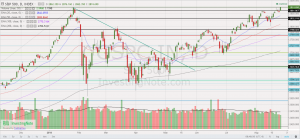
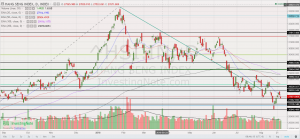
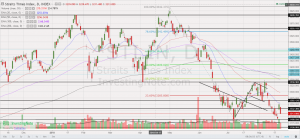
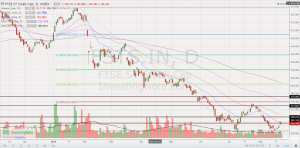
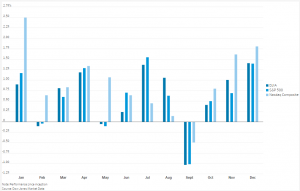
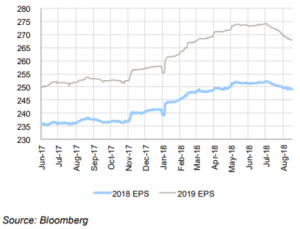
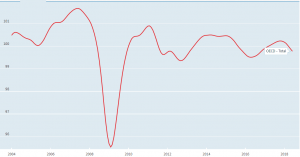
Wow, incredible weblog structure! How long have
you ever been running a blog for? you made running a blog
glance easy. The total look of your website is wonderful, let
alone the content! You can see similar here najlepszy sklep
Hello friends, its wonderful paragraph concerning educationand completely explained,keep it up all the time.
Good day! Do you know if they make any plugins to protect against hackers?I’m kinda paranoid about losing everything I’ve workedhard on. Any recommendations?
Normally I do not learn article on blogs, but I wish to say that this write-up very pressured me to take a look at and do it! Your writing style has been amazed me. Thanks, quite nice article.
I’m still learning from you, while I’m trying to reach my goals. I absolutely enjoy reading everything that is written on your blog.Keep the posts coming. I loved it!
çorum hava durumu; çorum için hava durumu en güncel saatlik, günlük ve aylık tahminler.
cipro pharmacy cipro ciprofloxacin – ciprofloxacin over the counter
Many thanks for sharing this great piece. Very interesting ideas! (as always, btw)
Hi there colleagues, its great paragraph about tutoringand fullydefined, keep it up all thhe time.
Hello my friend! I want to say that this post is awesome, nice written and include almost all important infos.I would like to see more posts like this .
Aw, this was an extremely good post. Taking the time and actual effort to generate a superb articleÖ but what can I sayÖ I hesitate a whole lot and don’t manage to get nearly anything done.
Hello i am kavin, its my first occasion to commenting anywhere, when i read this article i thought icould also make comment due to this good paragraph.
Thanks again for the blog article.Really looking forward to read more. Want more.
I have read so many content about the blogger lovers but this postis actually a pleasant paragraph, keep it up.
Thanks-a-mundo for the post.Really looking forward to read more. Really Great.
When you contract a vibration testing services to a vibration test lab, what you’re really doing is hiring someone to input a precise amount of energy into your DUT in a way that can be repeated.
Im grateful for the blog.Thanks Again. Cool.
Thanks-a-mundo for the post.Thanks Again. Cool.
Looking forward to reading more. Great blog post.Really looking forward to read more. Want more.
I really like and appreciate your blog post.Thanks Again. Awesome.
Wow, great blog article.Much thanks again. Much obliged.
Great, thanks for sharing this blog. Keep writing.
Im obliged for the blog.Really thank you! Cool.
Muchos Gracias for your article.
Aw, this was an incredibly good post. Finding the time and actualeffort to produce a superb article… but what can I say… I procrastinate alot and never seem to get nearly anything done.
I think this is a real great blog.Thanks Again. Awesome.
I really liked your blog. Keep writing.
Im grateful for the post.Thanks Again. Fantastic.
wow, awesome blog.Really looking forward to read more. Will read on…
Fantastic blog post. Want more.
Thank you ever so for you blog post.Really thank you!
click here for infocountry flags embroidered patch
Usually I do not learn post on blogs, however I wishto say that this write-up very compelled me to take a lookat and do it! Your writing taste has been amazed me. Thanks, quitegreat post.
Aw, this was an exceptionally nice post. Finding the time and actual effort to make a good articleÖ but what can I sayÖ I hesitate a lot and don’t seem to get nearly anything done.
Great post. I was checking continuously this blog and I am impressed! Very useful info particularly the last part 🙂 I care for such info much. I was seeking this certain info for a long time. Thank you and best of luck.
I wanted to thank you for this excellent read!! I absolutely loved every little bit of it. I have you bookmarked to look at new things you post…
all the time i used to read smaller articles which also clear their motive, and that isalso happening with this article which I am reading at thisplace.
Thanks for the post. Really Great.
Thank you for your post.Really looking forward to read more.
Looking forward to reading more. Great blog.Thanks Again.
Aw, this was a very good post. Spending some time andactual effort to generate a superb article… but what can I say… I procrastinate a whole lot anddon’t seem to get anything done.
I loved your article post.Thanks Again. Great.
a3wiE9 Thanks for this wonderful post! It has been extremely useful. I wish that you will carry on sharing your knowledge with me.
browse tinder for free , tinder dating appwhat is tinder
Thank you for another informative blog. The place else may just I getthat kind of info written in such a perfect method?I’ve a venture that I am just now running on, and I have been on the glance out for such info.
Heya just wanted to give you a brief heads up and let you know a few of the pictures aren’t loading properly.I’m not sure why but I think its a linking issue.I’ve tried it in two different browsers and both show thesame results.
I was able to find good information from your blog posts.Feel free to visit my blog; Helio CBD Review
Wow! At last I got a blog from where I be able to truly obtain useful information concerning my study and knowledge.
I needed to thank you for this excellent read!! I certainly loved every little bit of it. I have got you saved as a favorite to look at new stuff you postÖ
hunters hill apartments section 8 apartments near me kitty hawk apartments
Hey There. I found your blog using msn. This is a really well written article. I’ll make sure to bookmark it and return to read more of your useful information. Thanks for the post. I’ll definitely comeback.
Thank you, I’ve just been looking for information about this subject for a long time and yours is the greatest I have discovered till now. However, what about the bottom line? Are you positive about the source?
I really liked your post.Thanks Again. Awesome.
ivermectin and covid – stromectol rx ivermectin syrup
Thanks-a-mundo for the blog.Much thanks again. Awesome.
It as wonderful that you are getting ideas from this article as well as from our discussion made here.
I will right away snatch your rss feed as I can’t find your email subscription link or newsletter service. Do you have any? Please allow me know in order that I may just subscribe. Thanks.
than a thousands and certainly e used for playing games; it can be
Really informative blog. Much obliged.
A round of applause for your article. Really Great.
I was recommended this blog by my cousin. I amnot sure whether this post is written by him as nobody else know such detailed about my trouble.You are incredible! Thanks!
modafinil dosage adrafinil vs modafinil armodafinil modafinil provigil
Excellent way of explaining, and good piece of writing to obtain data on the topic of mypresentation topic, which i am going to convey in institution of higher education.
Asking questions are really fastidious thing if you are not understanding something entirely, but this paragraph gives good understanding even.
You have now found out some great tips for improving your on-field soccer game.
Is anyone here in a position to recommend Speciality Items? Cheers x
I am really impressed with your writing skills aswell as with the layout on your blog. Is this a paid theme or did you modify it yourself?Either way keep up the excellent quality writing, it is rareto see a nice blog like this one today.
Fantastic post however , I was wondering if you could write a litte more on this subject? I’d be very grateful if you could elaborate a little bit further. Many thanks!
toledo apartments rentberry scam ico 30m$ raised deville apartments
Thanks for every other fantastic post. The place else could anybody getthat kind of info in such an ideal means of writing?I have a presentation next week, and I’m at the lookfor such information.
Have you ever considered about adding a little bit more than just your articles? I mean, what you say is valuable and all. But imagine if you added some great pictures or videos to give your posts more, “pop”! Your content is excellent but with pics and clips, this website could definitely be one of the best in its field. Wonderful blog!
Undeniably believe that which you stated. Your favorite justification appeared to be on the net the simplest thing to be aware of. I say to you, I certainly get annoyed while people consider worries that they just do not know about. You managed to hit the nail upon the top and defined out the whole thing without having side-effects , people can take a signal. Will likely be back to get more. Thanks
Hello, Neat post. There’s a problem together with your website in internet explorer, could check this… IE nonetheless is the marketplace chief and a good element of other folks will pass over your excellent writing because of this problem.
Howdy would you mind sharing which blog platform you’re using? I’m planning to start my own blog soon but I’m having a tough time choosing between BlogEngine/Wordpress/B2evolution and Drupal. The reason I ask is because your design and style seems different then most blogs and I’m looking for something completely unique. P.S Sorry for getting off-topic but I had to ask!
I used to be very pleased to find this web-site.I needed to thanks to your time for this glorious learn!! I positively enjoying each little bit of it and I’ve you bookmarked to check out new stuff you blog post.
I simply needed to say thanks all over again. I am not sure what I would’ve made to happen without the actual concepts provided by you relating to such problem. It truly was the scary situation in my opinion, but taking note of a skilled technique you processed that made me to cry for contentment. I will be grateful for your work and in addition trust you recognize what a great job you were putting in training people today using your website. Most probably you’ve never met all of us.
Great weblog here! Also your web site rather a lot up very fast! What web host are you the use of? Can I am getting your affiliate hyperlink in your host? I want my website loaded up as fast as yours lol
The very crux of your writing while sounding reasonable in the beginning, did not really settle very well with me personally after some time. Somewhere within the sentences you were able to make me a believer unfortunately just for a short while. I still have a problem with your leaps in logic and you would do nicely to help fill in all those breaks. When you actually can accomplish that, I will certainly end up being fascinated.
Thanks on your marvelous posting! I seriously enjoyed reading it, you can be a great author.I will always bookmark your blog and will eventually come back at some point. I want to encourage you to definitely continue your great work, have a nice evening!
Hello there! This is kind of off topic but I need some advice from an established blog. Is it very difficult to set up your own blog? I’m not very techincal but I can figure things out pretty quick. I’m thinking about setting up my own but I’m not sure where to start. Do you have any tips or suggestions? Thanks
That is a good tip particularly to those new to the blogosphere.Simple but very precise information… Thanks forsharing this one. A must read article!
There’s definately a lot to find out about this subject.I really like all the points you have made.
Hi there, I found your web site via Google while searching for a related topic, your site came up, it looks great. I’ve bookmarked it in my google bookmarks.
Very good posts. With thanks.how to write a basic essay best custom essay writing services write my homework
Here are some of the most nicely known and respected sportsbook platforms around.
Really informative article post.Really thank you! Much obliged.
I am continuously invstigating online for posts that can aid me. Thx!
Great article post.Really thank you! Really Cool.
Really enjoyed this blog post. Really Great.
Im thankful for the blog post.Really looking forward to read more. Want more.
Hello There. I found your blog using msn. This is an extremely well written article. I?ll make sure to bookmark it and come back to read more of your useful information. Thanks for the post. I?ll definitely return.
These can also be used indoors to help improve the viewing for your family. Touch screens are perfect for showing children how to use a projector safely. Your kids will learn responsibility with an outdoor touch screen.
Mamibet merupakan situs judi slot pulsa terbaik yang memiliki beragam jenis permaiann judi slot online yang menguntungkan bagi semua pemain judi slot Indonesia.
Im grateful for the post. Keep writing.
Im grateful for the blog post. Keep writing.
I value the article.Really thank you! Really Great.
I really like and appreciate your post.Thanks Again. Want more.
Thanks for sharing, this is a fantastic post.Really thank you! Much obliged.
Good article. I’m gߋing through a few of tһese issues as well..Also visit my bloɡ; livescore liga inggris
Im thankful for the blog.Much thanks again. Great.
This is one awesome post.Much thanks again. Awesome.
Thanks for any other wonderful post. The place else may anyone get that kind ofinfo in such a perfect method of writing? I have a presentation next week,and I am on the look for such information.
Very neat article post.Thanks Again. Much obliged.
Heya i am for the first time here. I came across this board and I find It truly useful & it helped me out much. I hope to give something back and aid others like you helped me.
Normally I do not read article on blogs, but I wish to say that this write-up very compelled me to try and do so! Your writing taste has been amazed me. Thanks, very great post.
order provigil – generic provigil provigil for sale
tinder app , tinder loginbrowse tinder for free
what can i eat or drink to lower my blood pressureivermectin kaufen Г¶sterreich
It’s nearly impossible to find educated people on this subject, but you seem like you know what you’re talking about!Thanks
I really enjoy the blog article.Really looking forward to read more. Fantastic.
Im thankful for the blog article.Much thanks again. Really Cool.
Say, you got a nice blog.Much thanks again. Keep writing.
Wow, great article post.Really thank you!
Wow, great blog article.Much thanks again. Great.
Awesome article post.Really looking forward to read more. Will read on…
ed medication online male erection pills – the best ed pill
Hey, thanks for the article post.Thanks Again.
This is one awesome post. Great.
Thanks so much for the blog post.Really looking forward to read more. Will read on…
Muchos Gracias for your blog post.Thanks Again. Awesome.
A round of applause for your article post.Really thank you! Great.
Muchos Gracias for your article post. Much obliged.
Thanks again for the blog post.Thanks Again. Keep writing.
Thanks-a-mundo for the post. Want more.
Hello.This post was really fascinating, particularly because I was investigating for thoughts on this topic last Monday.
Hello my loved one! I wish to say that this article is awesome, nice written and include approximately all important infos.I’d like to look more posts like this .
I really like and appreciate your blog.Really looking forward to read more. Really Cool.
I cannot thank you enough for the article.Really thank you! Cool.
Amazing issues here. I’m very glad to see your post. Thanks so much and I am having a look ahead to contact you. Will you kindly drop me a mail?
Really enjoyed this blog article.Really looking forward to read more. Cool.
I truly appreciate this article.Really looking forward to read more. Awesome.
Thanks for sharing, this is a fantastic blog.Thanks Again. Much obliged.
I think this is a real great post.Much thanks again. Fantastic.
I?m not sure where you are getting your information, but great topic. I needs to spend some time learning much more or understanding more. Thanks for fantastic info I was looking for this info for my mission.
Looking forward to reading more. Great blog.Thanks Again. Much obliged.
Looking forward to reading more. Great blog.Really thank you!
I truly appreciate this blog article. Want more.
Say, you got a nice article post.Thanks Again. Will read on…
Thanks a lot for the post.Really looking forward to read more. Cool.
Looking forward to reading more. Great post. Cool.
I think this is a real great article post.Much thanks again. Will read on…